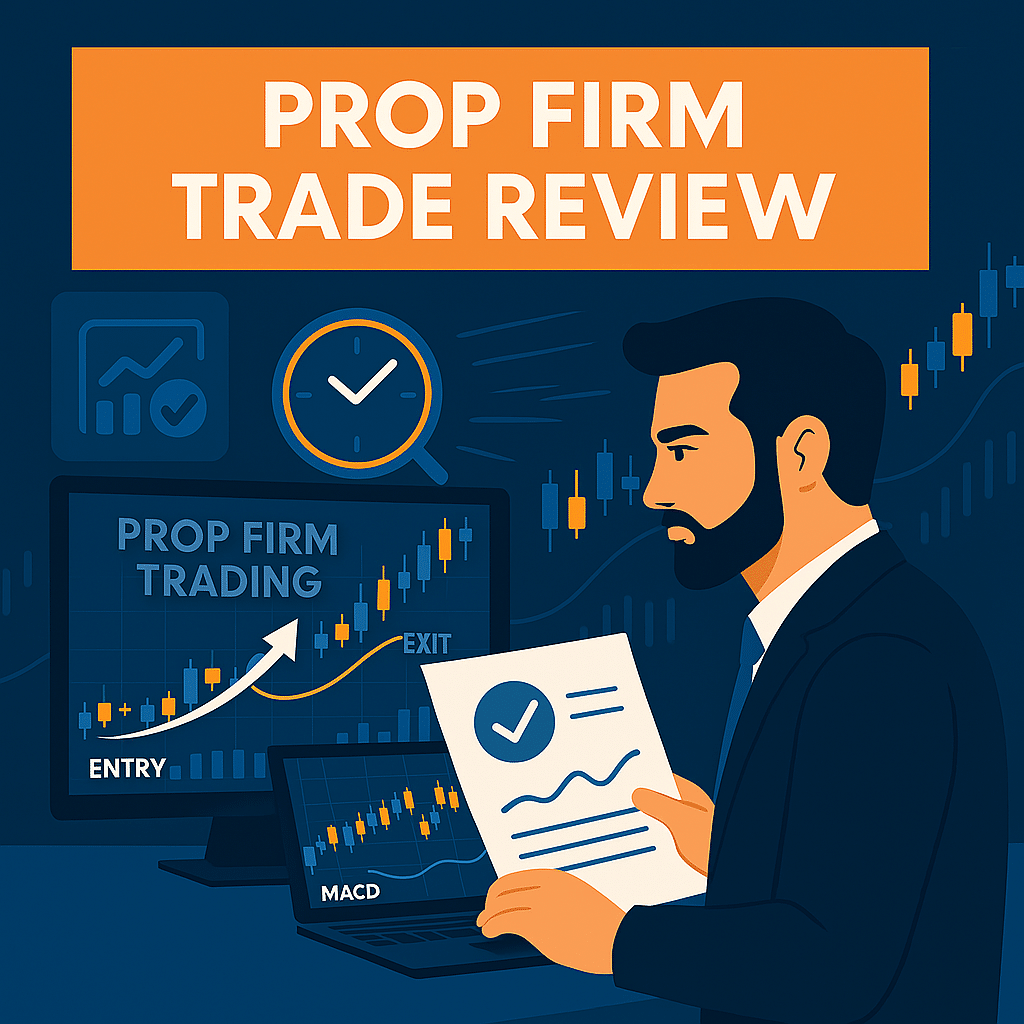Prop Firm Trade Review: How to Do a Trade Review for Funded Accounts
An effective prop firm trade review is one of the most valuable habits a funded trader can develop. It’s the process of analyzing past trades to identify patterns, strengths, and areas needing improvement. While many traders chase new strategies, top performers at firms like Larsa Capital achieve consistency by refining their current approach through regular trade reviews.
In this post, you’ll learn the complete trade review process, the tools you need, and how this practice improves your performance and accountability in a funded trading environment.
Why Trade Reviews Matter in Funded Trading
Funded prop trading comes with clear performance expectations. Firms don’t just want high returns—they want sustainable, rule-based, and consistent trading behavior. Conducting regular reviews helps traders:
- Measure progress against specific goals
- Eliminate recurring mistakes
- Build a data-driven improvement plan
With Larsa Capital, reviews are particularly helpful because their funded program supports long-term trader development.
Benefits of a Prop Firm Trade Review
A structured review process delivers many practical advantages:
1. Identifying Strengths
By reviewing winners, you’ll recognize the setups and conditions where your strategy thrives.
2. Spotting Weaknesses
Losing trades reveal recurring issues—emotional decisions, ignoring signals, poor risk management.
3. Reinforcing Discipline
A review allows you to see whether you followed your rules or acted impulsively.
4. Improving Risk Management
Over time, you’ll find patterns in stop-loss placements, lot sizing, and reward-to-risk ratios.
Key Elements of an Effective Trade Review
Here’s what your prop firm trade review should include:
1. Trade Snapshot
Document the trade entry, exit, instrument, date, time, and timeframe. Visuals help, so attach a screenshot if possible.
2. Setup Explanation
Explain why you entered the trade: Was it a trend continuation? Breakout? News reaction? Identify the core idea.
3. Rule Adherence
Did you follow your trading plan? If not, write down what happened and why.
4. Result Analysis
Was the trade profitable or not? More importantly, was it a good trade by process?
5. Emotional State
Record your emotions before, during, and after the trade. Were you anxious, confident, or hesitant?
Prop Firm Trade Review: A Sample Template
Use this simple framework to keep your reviews consistent:
Trade Summary:
- Instrument:
- Direction:
- Entry Price:
- Exit Price:
- Lot Size:
- Date/Time:
Setup Description:
- Reason for Entry:
- Indicator/Pattern Used:
- Risk/Reward Ratio:
Execution Notes:
- Did you follow your trading plan?
- Any technical issues?
Outcome:
- Profit/Loss:
- Was it a quality trade?
Emotional State:
- How did you feel before, during, and after?
Improvements:
- What can you do better next time?
Tools to Simplify Your Review Process
You don’t need complex software to conduct reviews effectively. However, the right tools can make your process more efficient.
1. Trading Journal (Manual or Digital)
Options like Edgewonk, Tradervue, or spreadsheets let you log trades and filter by performance metrics.
2. Screenshot Software
Snagit, Lightshot, or TradingView chart snapshots allow you to visually capture setups.
3. Performance Analytics
Use metrics like win rate, average R:R, and drawdown curves to spot trends.
Common Mistakes in Reviewing Trades
Avoid these errors when building your prop firm trade review process:
1. Ignoring Losing Trades
Losses teach more than wins. Always review your failed setups to learn faster.
2. Relying on Memory
Without documentation, you miss critical details. Record reviews right after trading.
3. Reviewing Too Infrequently
Make it a daily or weekly habit. Delayed reviews lose relevance.
4. Lack of Objectivity
Base your analysis on data, not emotion. Focus on what the numbers and screenshots tell you.
Subheading Featuring the Keyphrase: Why Every Funded Trader Needs a Prop Firm Trade Review Habit
Performing a consistent prop firm trade review routine builds the foundation for long-term success. Funded traders are under more scrutiny and have defined rules to follow. Reviewing trades regularly helps identify when and where you may be drifting from your plan.
Even if you’re profitable, trade reviews prevent complacency and sharpen your edge over time.
How Larsa Capital Encourages Trade Review Discipline
Larsa Capital is structured for serious traders. Their programs reward consistent, documented performance, not just short-term gains. By conducting frequent trade reviews, you:
- Align with their professional standards
- Reduce drawdowns
- Increase your chances of scaling and long-term retention
This mindset separates short-lived funded accounts from lasting trading careers.
Tips to Make Your Reviews More Powerful
1. Tag Trade Types
Group trades by strategy or setup. This helps identify which methods consistently deliver results.
2. Review in Blocks
Instead of reviewing daily, analyze 10-trade batches for broader insights.
3. Share With a Mentor
Discussing your reviews with another trader or coach can reveal blind spots.
4. Turn Mistakes Into Checklists
Every repeated error should lead to a checklist item or rule refinement.
Final Thoughts: Data-Driven Trading Wins in the Long Run
Consistently reviewing trades may feel tedious, but it creates compounding benefits. With a strong prop firm trade review process, you no longer rely on luck or memory. You operate from a data-driven, emotionally stable foundation that grows stronger over time.
At firms like Larsa Capital, that mindset is exactly what gets rewarded. Trade reviews aren’t just about accountability—they are your most powerful tool for unlocking scalable, funded success.

